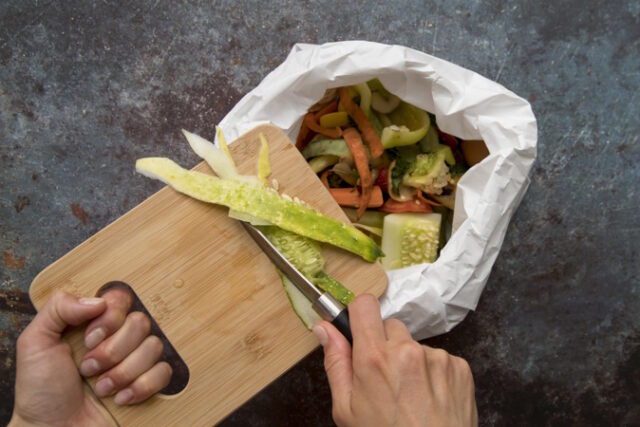
By Vanessa Mangru-Kumar // SWNS
The average American spends nearly $3,000 a year on unused groceries, according to new research.
A survey of 2,000 adults found that on average, those who do grocery shopping for their household spend $248 on weekly groceries, and one in 10 claim that they spend even more — upwards of $500.
Of that, people usually end up throwing away about $63 worth of weekly groceries.
Conducted by OnePoll on behalf of HelloFresh, the survey found that when respondents do cook, a quarter of them “always” or “often” make more food than they’re able to finish, usually with the intention of having leftovers (83%).
On average, people have leftovers to put into their fridges three times a week; however, they don’t always get around to using them up.
Nearly a third of Americans admit they’re likely to forget about leftovers once they’re out of sight (32%).
Forgetting about food is one of the top reasons people end up having food waste (35%), along with leftovers not being popular among members of their household (23%).
While 43% prefer to eat their leftovers until they’re finished, a quarter of respondents admitted they get tired of eating the same thing before they’re able to finish (24%).
“With inflation contributing to record high food costs, wasting groceries each week hurts both the environment and consumers’ wallets,” said Jeffrey Yorzyk, senior director of sustainability at HelloFresh. “Families cook with the best intention of using their leftovers, but our research shows that they are generally not consuming all of those leftovers. Getting creative with the food in your fridge can help families feel like they’re eating something new and exciting!”
And 38% revealed that they’ve thrown food away simply because they didn’t feel like eating it after purchasing it.
Waste starts even before shoppers get home, as a fifth of respondents shared that they often overestimate how much food they’ll use when grocery shopping (19%).
In fact, 23% of people who go grocery shopping wind up purchasing at least five food items a week that they wish they could get in smaller quantities, like bunches of grapes or strands of herbs.
With these foods, a similar percentage (22%) are not confident that they know the best ways to store foods to maximize freshness.
According to respondents, the hardest foods to use up are lettuce (27%), bananas (23%) and milk (21%).
Thirty-five percent of those surveyed said they throw away more food than they want to and a majority admitted that they’re riddled with guilt when this happens (73%).
Consequently, seven in 10 are trying to cut down on food waste with the hopes of saving money (60%), being less wasteful (52%) and increasing food availability to those who need it (26%).
Some of the ways people have considered cutting down on food waste are by using leftovers creatively (55%), creating a meal plan (37%) or composting (17%).
Although individuals want to cut down on food waste, only a quarter of respondents currently compost their scraps.
“We’re inspired by the fact that 70% of individuals care about food waste,” said Yorzyk. “Cooking with meal kits which provide pre-portioned ingredients, composting food waste and using ‘ugly’ produce are great ways to help you cut back on waste and contribute to a more sustainable future.”
HARDEST INGREDIENTS/FOODS TO USE UP
- Lettuce — 27%
- Bananas — 23%
- Milk — 21%
- Apples — 21%
- Bread — 21%
- Avocado — 17%
- Deli items (meat, cheese, prepared foods, etc.) — 16%
- Eggs — 16%
- Meat — 15%
- Carrots — 14%

This random double-opt-in survey of 2,000 general population Americans was commissioned by HelloFresh between March 23 and March 27, 2023. It was conducted by market research company OnePoll, whose team members are members of the Market Research Society and have corporate membership to the American Association for Public Opinion Research (AAPOR) and the European Society for Opinion and Marketing Research (ESOMAR).
This article originally appeared here and was republished with permission.












